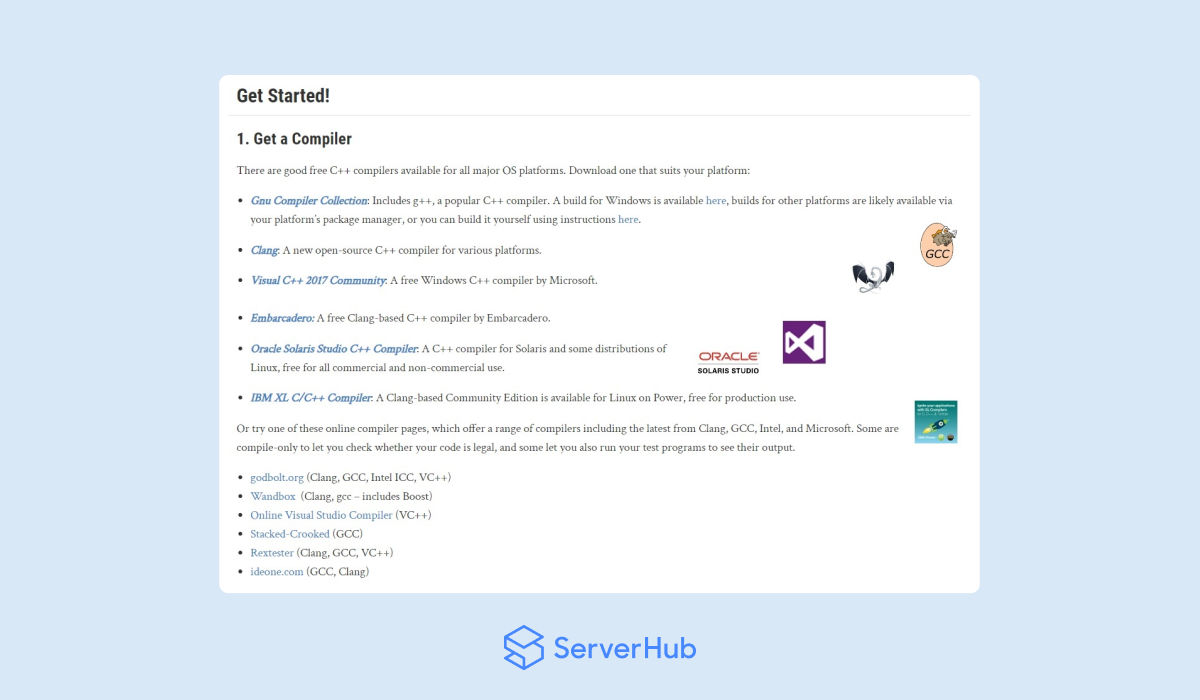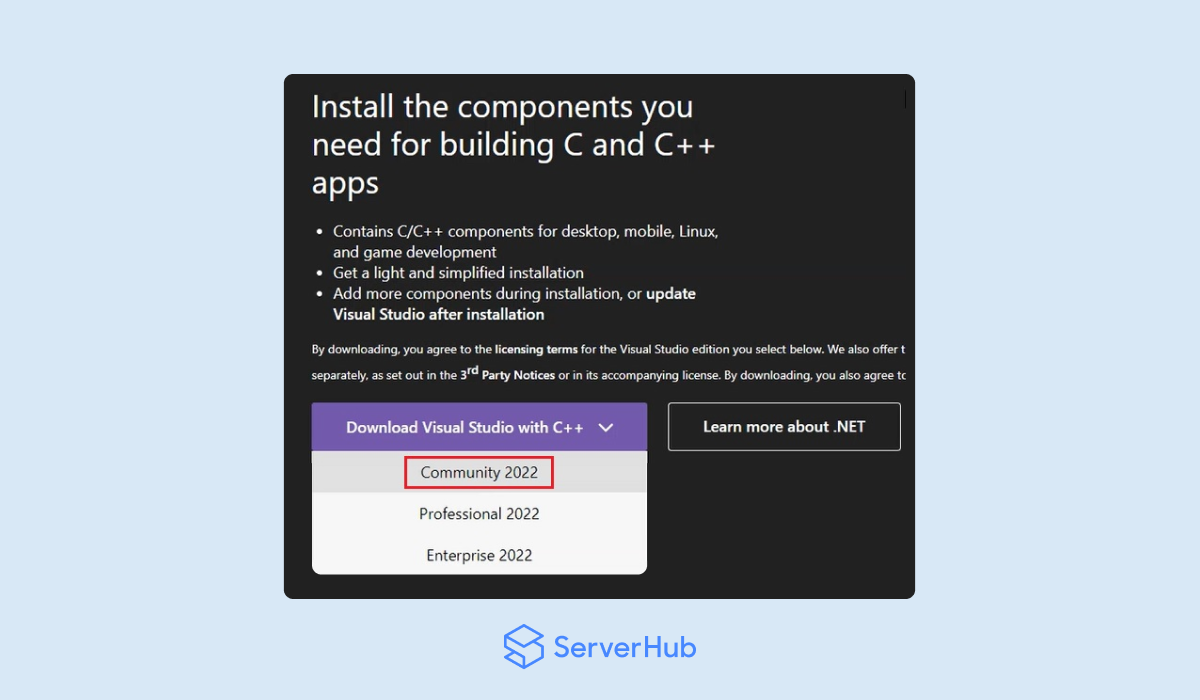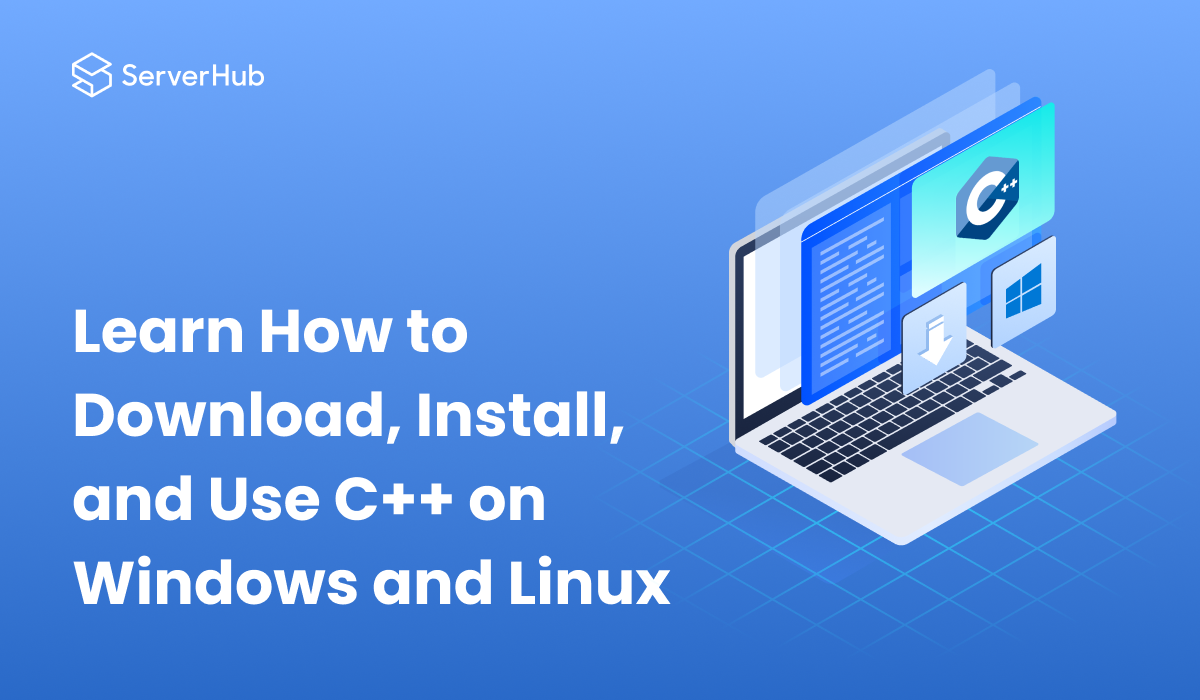C++ was created by Danish computer scientist Bjarne Stroustrup, and first released in 1985 as an extension of the C programming language. In this article, we'll explain what C++ is, and how to download, install, and use C++ 20 (the latest version of C++) on Windows and Linux operating systems. We'll also discuss the steps on how beginners can learn C++.
What is C++
C++ is a general-purpose programming that is mostly implemented as a compiled language, which means users would need a separate compiler to translate its code. C++ offers a balance between high-level abstraction and low-level control, making it a popular choice for developers who need performance and productivity. It is used for developing a wide range of applications, including finance, systems programming, game development, and high-performance applications.
Downloading a C++ Compiler
You need a compiler that can translate your code into machine language. The C++ official site provides free compilers at https://isocpp.org/get-started.

In the Get Started page is a list of compilers. Select and click to download the compiler that is appropriate for your operating system.
The Visual C++ 2017 Community link leads to the Visual Studio Integrated Development Environment (IDE) page which is updated for 2022, and has the necessary components to install and run C++ on your Windows system. The GNU Compiler Collection (GCC) is one of the most popular compilers for Linux system users. Once you download the installer file on your computer, make sure to follow the on-screen instructions.
Downloading, Installing and Using C++20 on Windows
Do the following steps:
1. Go to the Visual Studio IDE for C++ page. Click on the Download Visual Studio with C++ dropdown list.

2. Scroll down on the dropdown list. Click to download the Community 2022 edition.
3. Once the VisualStudioSetup file is downloaded on your computer, double-click or right-click on it. Select Open to install the Visual Studio IDE. Follow all the on-screen instructions.
4. After the installation is complete, launch the Visual Studio application.
5. Select “Create a new project”. Choose “Console App” under “C++” and select a project name and location.
6. Click “Create” to create your C++ project. Select from any of the project templates based on your requirements.
7. In the project settings, make sure the language standard is set to C++20. Navigate to the “Project Properties” or “Project Settings”. Then select the updated version.
8. You can now write C++ code in Visual Studio, and use the IDE to code, debug and run your programs.
Downloading, Installing and Using C++20 on Linux
Do the following steps:
1. To check if the GCC compiler is successfully installed, run the following command:
g++ --version
2. The GCC does not include its own text editor tool. Some of the free code editors that you can download and use are Visual Studio Code, Code::Blocks, Sublime Text, and Geany.
3. Open your preferred code editor. Select “File” > “New Folder”. Choose a project name and location. Save your file with a .cpp extension.
4. To compile your code, press Ctrl+Alt+T on the keyboard to open the Terminal. Go to the directory page where your C++ is saved. Use the following "g++" command to compile the code:
g++ your_program.cpp -o your_program
5. After compiling your code, run the program by using the following command:
./your_program
How to Learn C++ for Beginners
Step 1: Utilize online resources
You can read online resources to supplement your learning. Some of the free online learning resources are cplusplus.com, learncpp.com, Codecademy/C++, W3Schools C++ Tutorial, and GeeksforGeeks C++ Tutorial. These websites provide step-by-step tutorials, code examples, and exercises to help beginners to learn the C++ code concepts.
Step 2: Practice coding exercises
Regular practice of coding reinforces your understanding of C++, helps you apply what you have learned, and improves your problem-solving skills. Some of the websites that offer free coding exercises are exercism, CareerKarma C++ exercises, and W3Schools C++ Exercise.
Step 3: Join online communities
Joining online forums will give you an opportunity to learn from experienced programmers, ask questions, and seek guidance. Some of the popular C++ online communities are Reddit C++, Stack Overflow/Newest C++ Questions, C Board/C++ Programming, and GeeksforGeeks/C++ Discuss.
Step 4: Build small projects
Initially doing simple projects will help you gain hands-on experience and consolidate your understanding of C++. You can start with simple applications and games, and as you become more familiar with coding, you can proceed to more complex projects.
Is C++ Hard to Learn?
C++ is a complex language that can be difficult to learn for beginners. It's important that you decide time and effort to writing code and exercises. You should start with the basics and gradually move to more advanced topics as you build up your knowledge.
How Long Does it Take to Learn C++?
The time it takes to learn C++ depends on your background and experience. If you're new to programming, it may take several months to become proficient in C++. However, if you have prior programming experience, you'll be able to learn C++ much faster.
Should I Learn C++?
If you're a beginner, you should learn C++ because it is widely used in a lot of applications such as financial technology, system software, embedded systems, and game development. Learning C++ can open up many career opportunities since the demand for C++ developers remains high in the job market.
